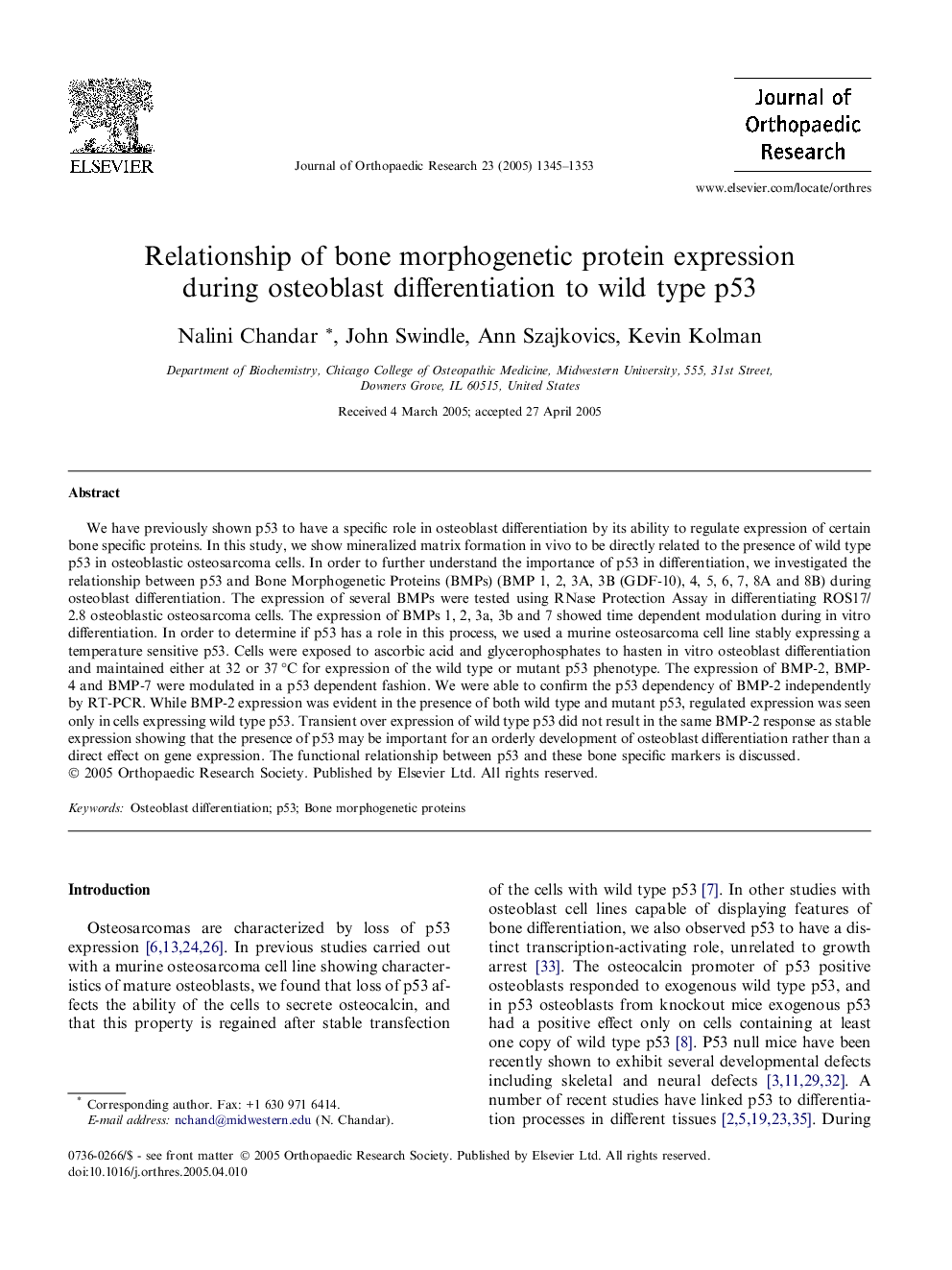| Article ID | Journal | Published Year | Pages | File Type |
|---|---|---|---|---|
| 9353865 | Journal of Orthopaedic Research | 2005 | 9 Pages |
Abstract
We have previously shown p53 to have a specific role in osteoblast differentiation by its ability to regulate expression of certain bone specific proteins. In this study, we show mineralized matrix formation in vivo to be directly related to the presence of wild type p53 in osteoblastic osteosarcoma cells. In order to further understand the importance of p53 in differentiation, we investigated the relationship between p53 and Bone Morphogenetic Proteins (BMPs) (BMP 1, 2, 3A, 3B (GDF-10), 4, 5, 6, 7, 8A and 8B) during osteoblast differentiation. The expression of several BMPs were tested using RNase Protection Assay in differentiating ROS17/2.8 osteoblastic osteosarcoma cells. The expression of BMPs 1, 2, 3a, 3b and 7 showed time dependent modulation during in vitro differentiation. In order to determine if p53 has a role in this process, we used a murine osteosarcoma cell line stably expressing a temperature sensitive p53. Cells were exposed to ascorbic acid and glycerophosphates to hasten in vitro osteoblast differentiation and maintained either at 32 or 37 °C for expression of the wild type or mutant p53 phenotype. The expression of BMP-2, BMP-4 and BMP-7 were modulated in a p53 dependent fashion. We were able to confirm the p53 dependency of BMP-2 independently by RT-PCR. While BMP-2 expression was evident in the presence of both wild type and mutant p53, regulated expression was seen only in cells expressing wild type p53. Transient over expression of wild type p53 did not result in the same BMP-2 response as stable expression showing that the presence of p53 may be important for an orderly development of osteoblast differentiation rather than a direct effect on gene expression. The functional relationship between p53 and these bone specific markers is discussed.
Related Topics
Health Sciences
Medicine and Dentistry
Orthopedics, Sports Medicine and Rehabilitation
Authors
Nalini Chandar, John Swindle, Ann Szajkovics, Kevin Kolman,
